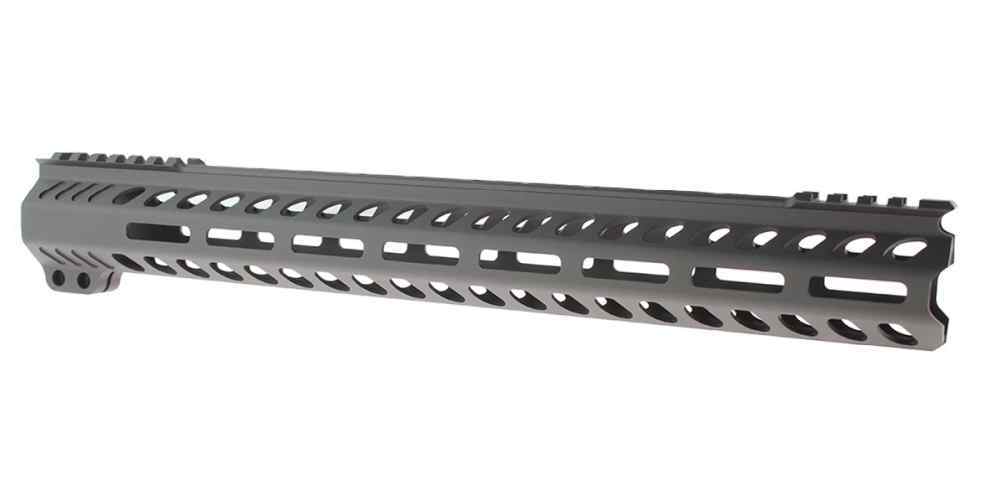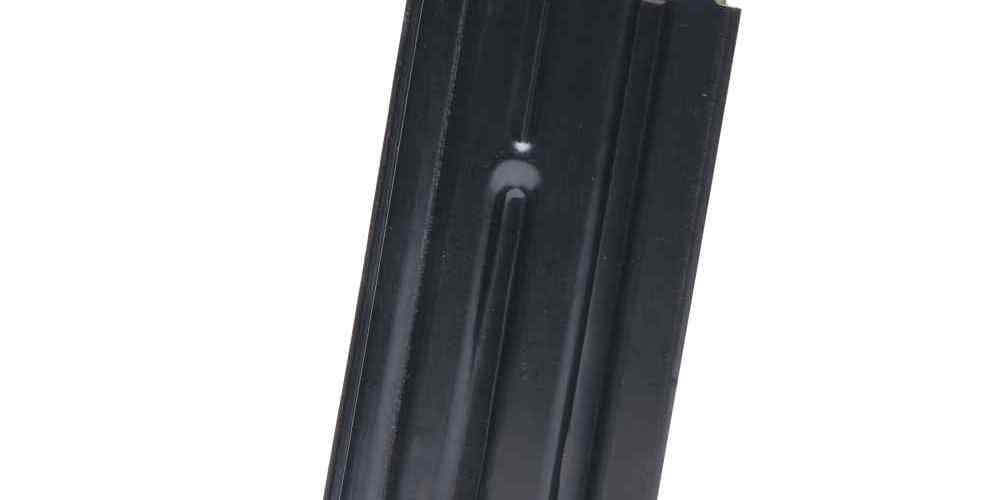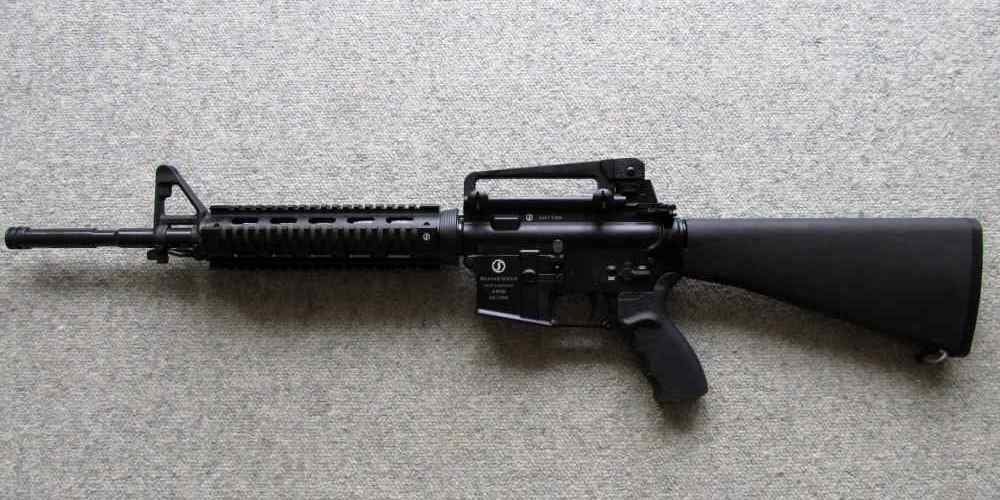“Conquer any jam with ease – AR15s made simple.”
Troubleshooting Common AR15 Jamming Problems
If you’re a proud owner of an AR15, you know how important it is to keep your rifle in top working condition. However, even the most well-maintained AR15 can experience jamming issues from time to time. Jamming can be frustrating and potentially dangerous, so it’s crucial to address these issues promptly. In this article, we’ll discuss some common AR15 jamming problems and how to troubleshoot them effectively. One of the most common causes of jamming in AR15s is improper maintenance. Neglecting to clean and lubricate your rifle regularly can lead to a buildup of dirt, debris, and fouling in the chamber and barrel. This can cause rounds to fail to feed properly, resulting in jams. To prevent this issue, make sure to clean your ar15 after each use and lubricate it according to the manufacturer’s recommendations. Another common cause of jamming in ar15s is using low-quality or improperly sized ammunition. Using ammunition that is too long or too short for your rifle’s chamber can cause feeding issues and lead to jams. Additionally, using dirty or corroded ammunition can also cause malfunctions. To avoid these problems, always use high-quality, properly sized ammunition and inspect each round before loading it into your rifle. In some cases, jamming issues in AR15s can be caused by a worn or damaged magazine. Over time, magazines can become bent, cracked, or dirty, which can prevent rounds from feeding properly. If you suspect that your magazine is causing jams, try using a different magazine to see if the issue persists. If the problem goes away, it’s likely that your original magazine needs to be replaced. Another potential cause of jamming in AR15s is a weak or damaged extractor. The extractor is responsible for pulling spent casings out of the chamber after firing, and if it is not functioning properly, it can cause jams. To check the condition of your extractor, remove the bolt carrier group from your rifle and inspect the extractor for any signs of wear or damage. If you notice any issues, consider replacing the extractor to prevent future jamming problems. Sometimes, jamming issues in AR15s can be caused by a dirty or damaged gas system. The gas system is responsible for cycling the action of the rifle, and if it is clogged or malfunctioning, it can cause failures to eject or failures to feed. To prevent this issue, make sure to clean your gas system regularly and inspect it for any signs of wear or damage. If you notice any issues, consider having a professional gunsmith inspect and repair your gas system. In conclusion, jamming issues in AR15s can be frustrating, but with proper maintenance and troubleshooting, they can be easily resolved. By keeping your rifle clean, using high-quality ammunition, inspecting your magazines and extractor, and maintaining your gas system, you can prevent jamming problems and keep your AR15 running smoothly. If you continue to experience jamming after trying these troubleshooting tips, consider seeking help from a professional gunsmith to diagnose and repair the issue. By taking care of your AR15 and addressing jamming problems promptly, you can ensure that your rifle remains reliable and safe for years to come.
Upgrading Your AR15 to Improve Reliability
If you’re a proud owner of an AR15, you know that it’s a versatile and reliable firearm. However, like any mechanical device, it can encounter issues that may affect its performance. One common problem that AR15 owners face is jamming. Jamming can be frustrating and potentially dangerous, especially in critical situations. Fortunately, there are steps you can take to tackle tough jamming issues in your AR15 and improve its reliability. One of the first things you should do when dealing with jamming issues is to identify the root cause. There are several factors that can contribute to jamming, including improper maintenance, low-quality ammunition, and worn-out parts. By pinpointing the specific cause of the problem, you can take targeted steps to address it and prevent future jams. Proper maintenance is key to keeping your AR15 in top condition and preventing jamming issues. Regular cleaning and lubrication of your firearm can help ensure smooth operation and reduce the risk of malfunctions. Make sure to follow the manufacturer’s guidelines for cleaning and maintenance, and pay special attention to areas prone to carbon buildup, such as the bolt carrier group and chamber. In addition to proper maintenance, using high-quality ammunition can also help prevent jamming issues. Low-quality or improperly stored ammunition can cause misfeeds and failures to eject, leading to frustrating jams. Invest in reputable ammunition brands and store your rounds in a cool, dry place to maintain their quality and reliability. If you’ve ruled out maintenance and ammunition issues and are still experiencing jamming problems, it may be time to consider upgrading your AR15. Upgrading certain components of your firearm can improve its reliability and performance, reducing the likelihood of jams. Consider upgrading your extractor, ejector, and buffer system to enhance the cycling and ejection process, minimizing the risk of malfunctions. Another upgrade that can help tackle tough jamming issues in your AR15 is installing an enhanced bolt carrier group. A high-quality bolt carrier group can improve the overall function of your firearm, ensuring smooth cycling and reliable ejection. Look for bolt carrier groups made from durable materials and featuring enhanced design elements, such as improved gas rings and staking. In addition to upgrading individual components, you may also want to consider investing in a quality aftermarket magazine for your AR15. A reliable magazine is essential for proper feeding and cycling, and a subpar magazine can contribute to jamming issues. Look for magazines made from durable materials and featuring a sturdy construction to ensure consistent performance. When upgrading your AR15 to improve reliability and tackle tough jamming issues, it’s important to do your research and choose high-quality components from reputable manufacturers. Consult with experienced gunsmiths or fellow AR15 enthusiasts for recommendations on upgrades that can enhance the performance of your firearm. By taking proactive steps to address jamming issues and investing in quality upgrades, you can enjoy a more reliable and efficient shooting experience with your AR15.
Understanding the Importance of Proper Maintenance for AR15s
When it comes to owning an AR15, proper maintenance is key to ensuring its longevity and performance. One common issue that many AR15 owners face is jamming. Jamming can be frustrating and even dangerous if not addressed properly. In this article, we will discuss the importance of proper maintenance for AR15s and how to tackle tough jamming issues. First and foremost, it is crucial to understand the inner workings of your AR15 in order to properly maintain it. The AR15 is a complex firearm with many moving parts that need to be cleaned and lubricated regularly. Neglecting this maintenance can lead to jamming issues down the line. By taking the time to familiarize yourself with your AR15 and its components, you can prevent jamming before it becomes a problem. One of the most common causes of jamming in AR15s is dirty or fouled ammunition. When firing your AR15, residue from the ammunition can build up in the chamber and cause the bolt to stick. This can result in failure to feed or eject rounds properly, leading to jamming. To prevent this issue, it is important to clean your AR15 regularly and inspect the chamber for any buildup. Another common cause of jamming in AR15s is improper lubrication. Without proper lubrication, the moving parts of your AR15 can become sluggish and prone to sticking. This can result in failure to cycle properly, leading to jamming. To avoid this issue, be sure to use a high-quality gun oil or lubricant on all moving parts of your AR15. Regularly inspect and reapply lubricant as needed to keep your AR15 running smoothly. In addition to cleaning and lubricating your AR15, it is important to regularly inspect and replace worn or damaged parts. Over time, the components of your AR15 can wear down and become less effective. This can lead to jamming and other performance issues. By regularly inspecting your AR15 and replacing any worn or damaged parts, you can prevent jamming and keep your firearm in top condition. If you are experiencing persistent jamming issues with your AR15, it may be necessary to seek professional help. A gunsmith or firearms expert can help diagnose the problem and recommend the best course of action to resolve it. Whether it is a simple cleaning or a more complex repair, seeking professional help can ensure that your AR15 is functioning properly and safely. In conclusion, proper maintenance is essential for preventing jamming issues in AR15s. By understanding the inner workings of your AR15, regularly cleaning and lubricating it, and inspecting for worn or damaged parts, you can keep your firearm running smoothly and reliably. If you are experiencing persistent jamming problems, don’t hesitate to seek professional help. With proper maintenance and care, your AR15 can provide years of reliable performance.
Exploring Different Ammunition Types for AR15s
When it comes to owning an AR15, one of the most common issues that gun owners face is jamming. Whether you’re a seasoned shooter or a beginner, dealing with jamming problems can be frustrating and impact your shooting experience. However, there are ways to tackle tough jamming issues in AR15s, and one of the key factors to consider is the type of ammunition you’re using. Different ammunition types can have a significant impact on the performance of your AR15. It’s important to understand the characteristics of each type of ammunition and how they can affect your gun’s reliability. By exploring different ammunition types, you can find the best option for your AR15 and minimize the risk of jamming issues. One of the most common causes of jamming in AR15s is using low-quality or improperly sized ammunition. When the ammunition doesn’t fit properly in the chamber, it can lead to feeding issues and cause the gun to jam. To avoid this problem, it’s essential to use high-quality ammunition that is the correct size for your AR15. Another factor to consider when choosing ammunition for your AR15 is the bullet weight. Different bullet weights can have varying levels of recoil and muzzle velocity, which can impact the gun’s performance. It’s important to find the right balance between bullet weight and your shooting preferences to ensure smooth operation and minimize jamming issues. In addition to bullet weight, the type of bullet can also affect your AR15’s performance. Full metal jacket (FMJ) bullets are commonly used for target shooting and training, but they may not be the best option for preventing jamming issues. Hollow point bullets, on the other hand, are designed for self-defense and hunting and can provide better expansion and stopping power. When it comes to tackling tough jamming issues in AR15s, experimenting with different types of ammunition can help you find the best solution for your gun. By testing out various brands, bullet weights, and bullet types, you can determine which ammunition performs the best in your AR15 and minimizes the risk of jamming. It’s also important to regularly clean and maintain your AR15 to prevent jamming issues. Dirty or improperly lubricated guns are more prone to jamming, so make sure to clean your gun after each use and follow the manufacturer’s recommendations for maintenance. In conclusion, tackling tough jamming issues in AR15s requires careful consideration of the type of ammunition you’re using. By exploring different ammunition types, bullet weights, and bullet types, you can find the best option for your AR15 and minimize the risk of jamming problems. Additionally, regular cleaning and maintenance are essential to keep your gun in top condition and prevent jamming issues. With the right approach, you can enjoy a smooth shooting experience with your AR15 and avoid the frustration of dealing with jamming problems.
Tips for Preventing Jamming Issues in Your AR15
If you own an AR15, you know how important it is to keep it in top working condition. One of the most frustrating issues that can arise with this popular rifle is jamming. Whether you’re at the range or out in the field, a jammed AR15 can quickly put a damper on your shooting experience. Fortunately, there are steps you can take to prevent jamming issues and keep your AR15 running smoothly. One of the most common causes of jamming in AR15s is improper maintenance. Regular cleaning and lubrication are essential for keeping your rifle functioning properly. Make sure to clean your AR15 after every use, paying special attention to the chamber, bolt carrier group, and gas system. Use a high-quality gun cleaning kit and lubricant to ensure that all parts are free of debris and well-lubricated. Another common cause of jamming in AR15s is using low-quality or improperly sized ammunition. Make sure to use ammunition that is specifically designed for use in AR15 rifles, and avoid using reloaded or damaged cartridges. Check the manufacturer’s recommendations for the correct caliber and bullet weight for your rifle, and always inspect your ammunition before loading it into your AR15. Properly maintaining your magazines is also crucial for preventing jamming issues in your AR15. Make sure to regularly clean and inspect your magazines for any signs of wear or damage. Replace any worn or damaged magazines to ensure reliable feeding of ammunition into your rifle. Additionally, make sure to properly load your magazines, following the manufacturer’s recommendations for the correct number of rounds and proper alignment of the cartridges. In addition to proper maintenance and ammunition selection, there are a few other tips you can follow to prevent jamming in your AR15. One important tip is to avoid “riding the bolt” when chambering a round. Instead of gently guiding the bolt forward, allow it to slam shut with a firm push. This will ensure that the round is fully seated in the chamber and reduce the risk of a malfunction. Another tip is to avoid using a “death grip” on your AR15 when shooting. Gripping the rifle too tightly can cause it to malfunction, as it may not be able to properly cycle the next round. Instead, use a firm but relaxed grip on the rifle to allow for proper recoil management and cycling of the action. Finally, make sure to regularly test fire your AR15 to ensure that it is functioning properly. Take your rifle to the range and shoot a few rounds to check for any issues with feeding, extraction, or ejection. If you notice any problems, address them immediately to prevent further malfunctions. By following these tips and taking proper care of your AR15, you can prevent jamming issues and keep your rifle running smoothly. Remember to regularly clean and lubricate your rifle, use high-quality ammunition, maintain your magazines, and follow proper shooting techniques. With a little attention to detail and regular maintenance, you can enjoy reliable performance from your AR15 for years to come.








